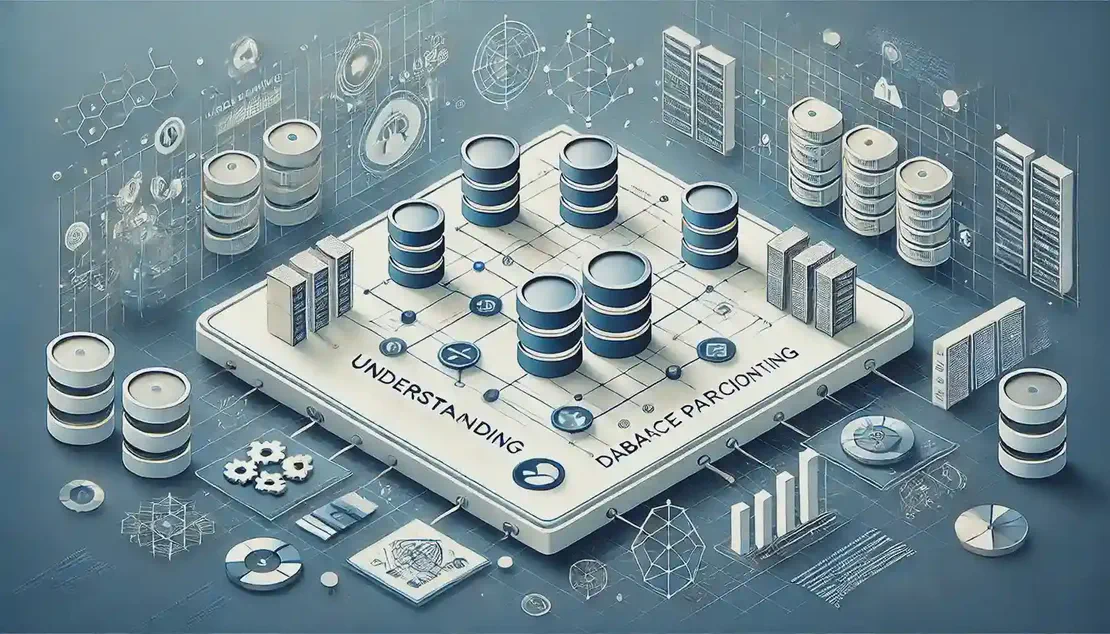
Understanding Database Partitioning
- Vipul Kumar
- Databases , Scalability
- December 27, 2024
Table of Contents
🔍 Definition — Database partitioning is a technique used to divide a large dataset into smaller, more manageable pieces called partitions. This helps improve the performance and scalability of the database system.
📈 Benefits — Partitioning can enhance scalability, availability, and performance by distributing data across multiple servers, reducing latency, and avoiding single points of failure.
🔄 Types — There are two main types of partitioning: horizontal and vertical. Horizontal partitioning divides data into rows, while vertical partitioning splits data into columns.
⚖️ Challenges — Effective partitioning requires careful selection of partition keys to ensure balanced data distribution. Poorly chosen keys can lead to uneven load and performance issues.
🔧 Use Cases — Partitioning is particularly useful in large-scale applications where data needs to be accessed quickly and efficiently, such as in distributed systems and cloud-based databases.
Types of Partitioning
🔄 Horizontal Partitioning — This involves dividing a table into smaller tables, each containing a subset of the rows. It is often used to distribute data across multiple servers to improve performance and scalability.
📊 Vertical Partitioning — This method splits a table into smaller tables based on columns. It is useful for separating frequently accessed columns from those that are less frequently used, optimizing query performance.
🔑 Partition Key — The choice of partition key is crucial in horizontal partitioning. It determines how data is distributed across partitions and can impact load balancing and performance.
🗂️ Range Partitioning — A type of horizontal partitioning where data is divided based on a range of values, such as dates or numerical ranges.
📍 List Partitioning — Another horizontal partitioning method where data is divided based on a predefined list of values, such as geographic regions.
Benefits and Challenges
📈 Scalability — Partitioning allows databases to scale horizontally by adding more servers, which can handle increased loads and improve performance.
🔄 Availability — By distributing data across multiple servers, partitioning reduces the risk of a single point of failure, enhancing database availability.
⚡ Performance — Partitioning can reduce query response times by limiting the amount of data that needs to be scanned, especially in large datasets.
⚖️ Load Balancing — Effective partitioning requires balanced data distribution to prevent some partitions from becoming overloaded, which can degrade performance.
🔍 Complexity — Implementing partitioning can introduce complexity in database management, requiring careful planning and monitoring to ensure optimal performance.
Real-World Applications
🌐 Distributed Systems — Partitioning is essential in distributed databases to manage data efficiently across multiple nodes, ensuring quick access and high availability.
🚀 Cloud Databases — Many cloud-based databases use partitioning to handle large volumes of data and provide scalable solutions for businesses.
📊 Data Warehousing — Partitioning helps in managing large datasets in data warehouses, improving query performance and data retrieval times.
📈 Big Data Analytics — In big data environments, partitioning is used to process and analyze large datasets efficiently, enabling faster insights.
🛠️ IoT Applications — Internet of Things (IoT) systems often rely on partitioning to manage the vast amounts of data generated by connected devices.
Follow me on: LinkedIn | WhatsApp | Medium | Dev.to | Github
Database Partitioning vs. Sharding: What's the Difference?
singlestore.com
What is data partitioning, and how to do it right
cockroachlabs.com
Data Partitioning Explained! Everything You Need to Know ...
youtube.com
Data Partitioning Explained in Under 60 Seconds
youtube.com
Data Partitioning Explained!
youtube.com
What Is Database Partitioning?
questdb.io
Understanding Database Partitioning in Distributed Systems
medium.com
Database Indexing and Partitioning: Tutorial & Examples
macrometa.com
Data Partitioning: What It Is and Why It Matters
timescale.com
A Comprehensive Guide to Best Practices and Benefits
linkedin.com
Data partitioning guidance - Azure Architecture Center
learn.microsoft.com
Understanding Database Partitioning in Distributed Systems
medium.com

